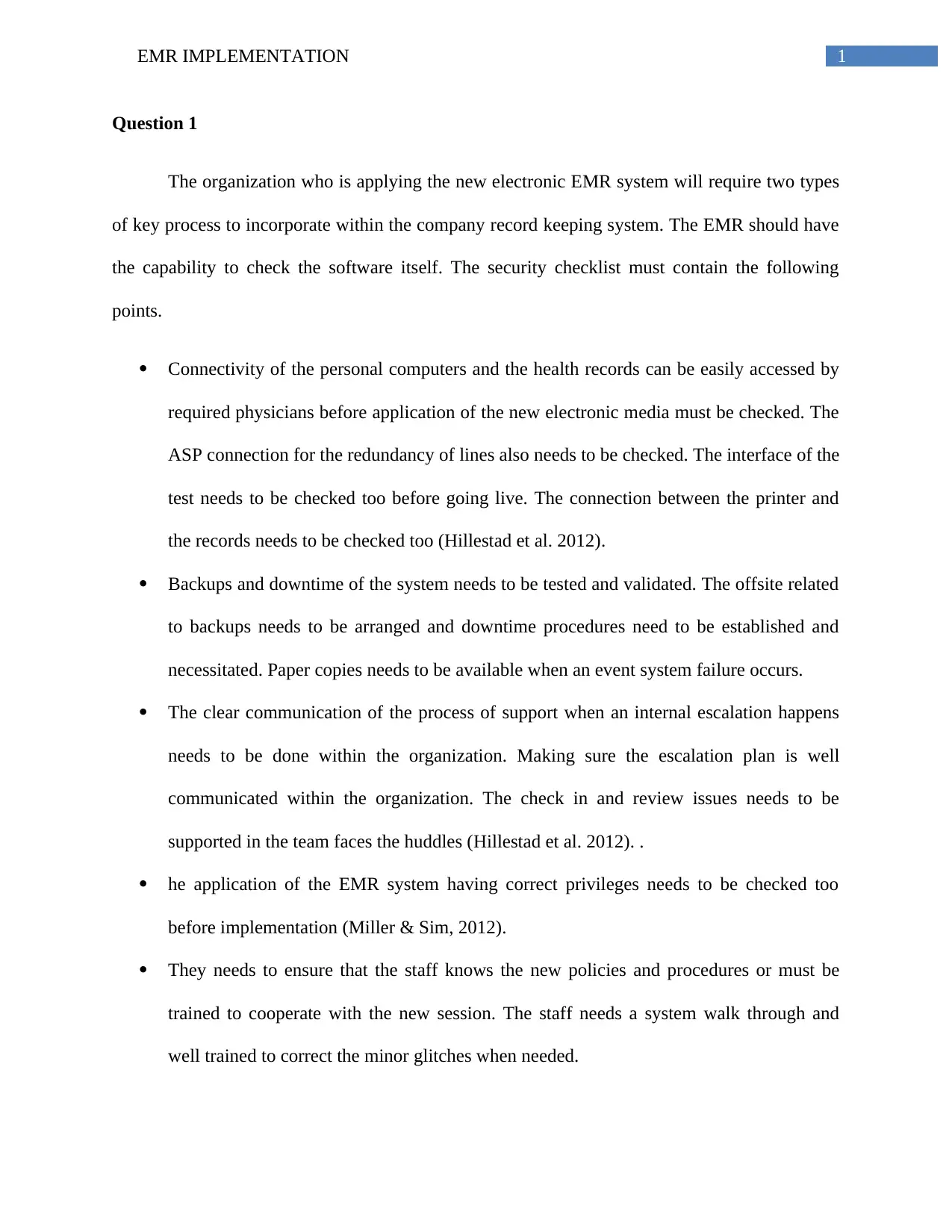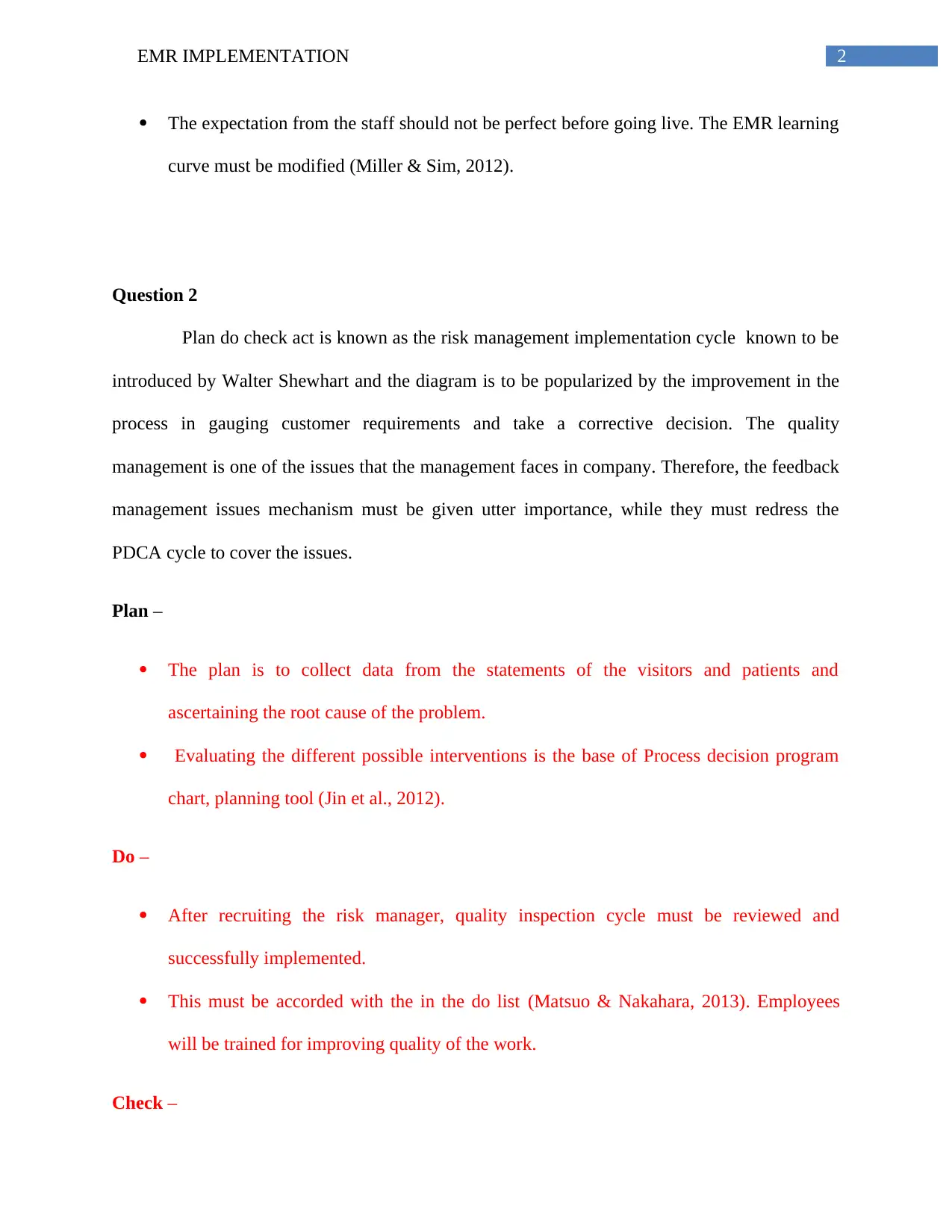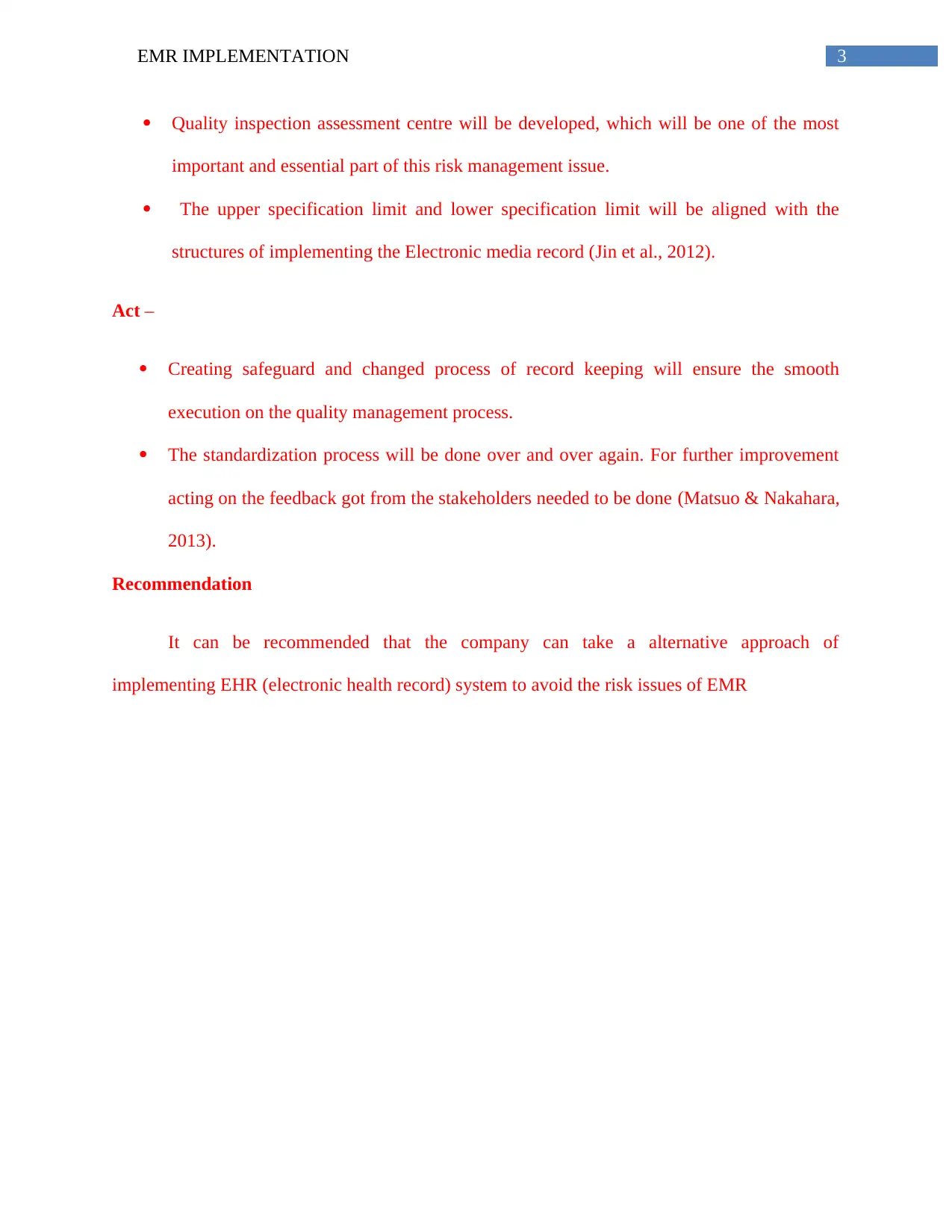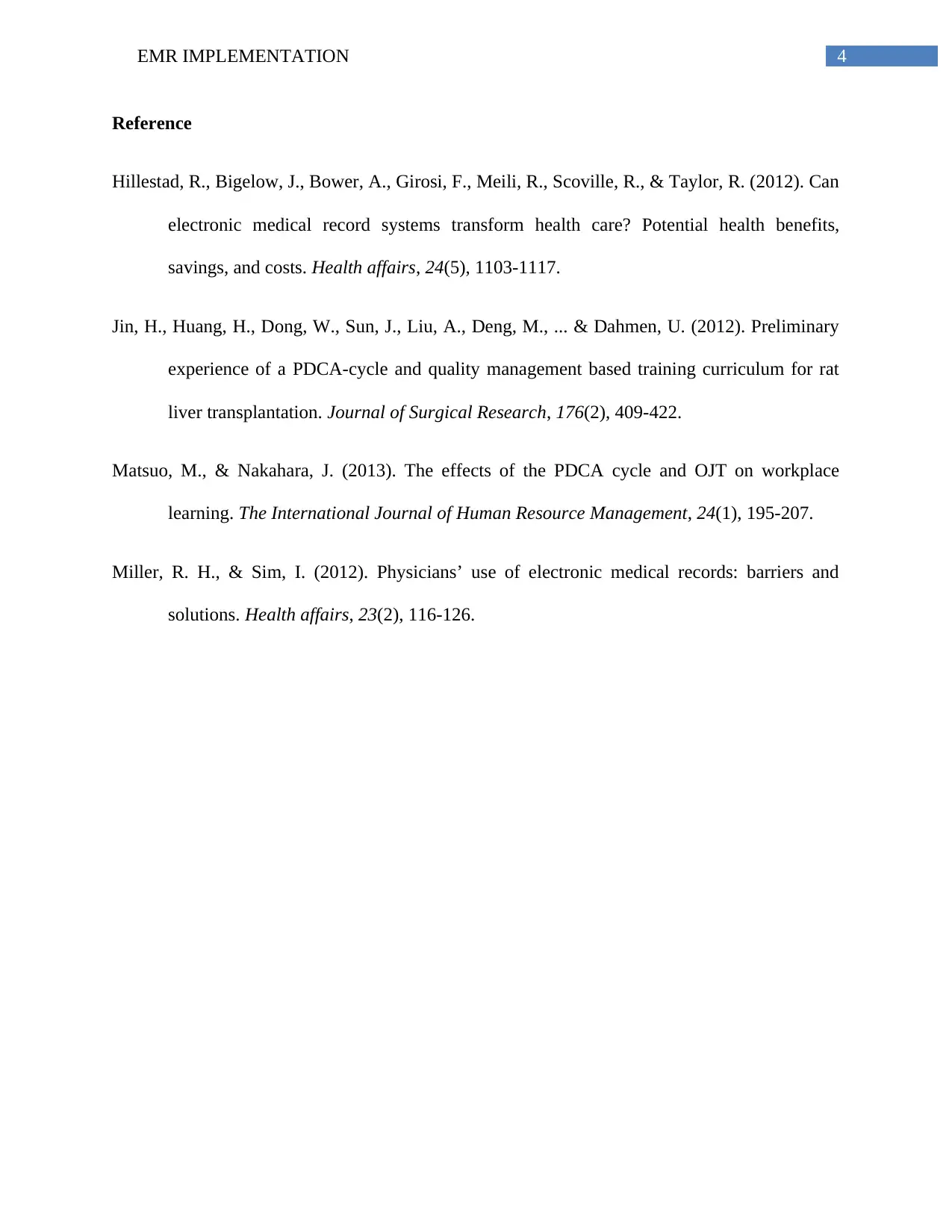Healthcare EMR Implementation Report: Processes and Risk Management
VerifiedAdded on 2020/03/23
|5
|863
|317
Report
AI Summary
This report examines the implementation of Electronic Medical Records (EMR) systems within a healthcare organization. It begins by outlining key processes necessary for successful EMR integration, including security checklists that address computer connectivity, ASP connections, printer interfaces, data backups, and staff training. The report then delves into risk management using the Plan-Do-Check-Act (PDCA) cycle, emphasizing the importance of feedback mechanisms and quality management. The PDCA cycle is applied to patient data collection, process implementation, quality assessment, and continuous improvement. Finally, the report provides recommendations for the company to take an alternative approach of implementing EHR (electronic health record) system to avoid the risk issues of EMR, and the report concludes with a list of relevant references supporting the analysis.
1 out of 5










![[object Object]](/_next/static/media/star-bottom.7253800d.svg)